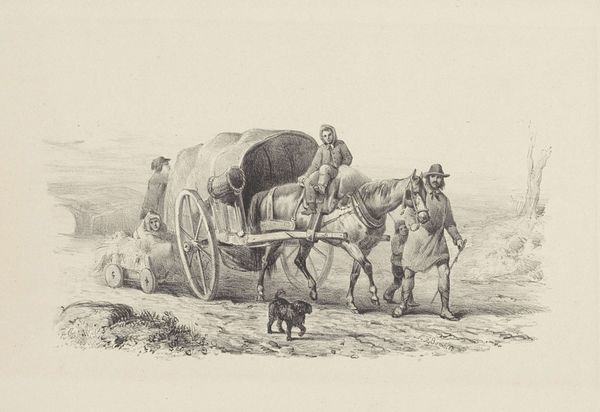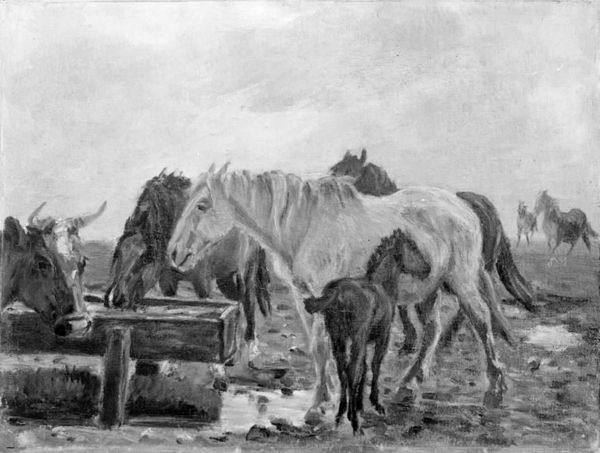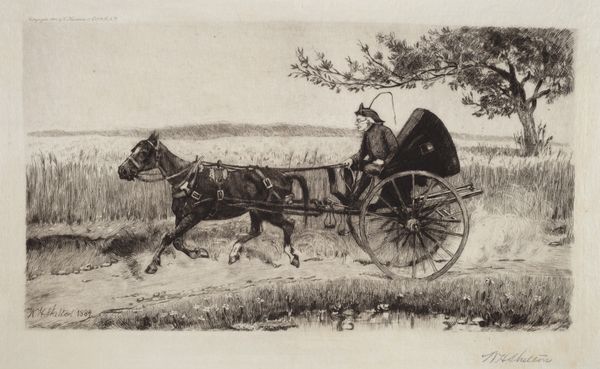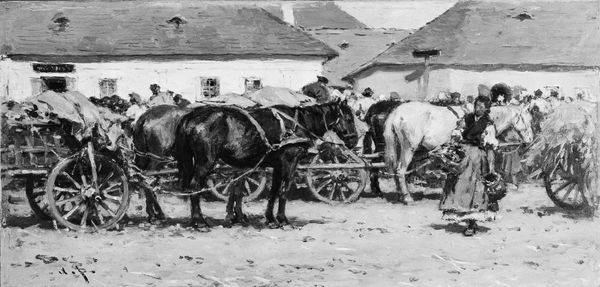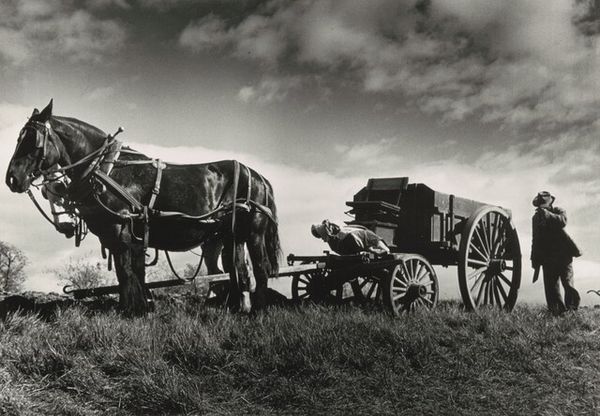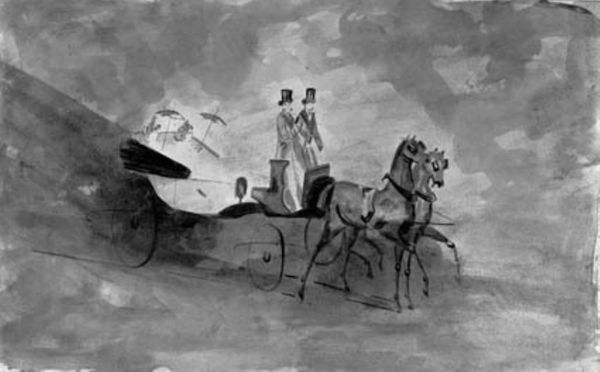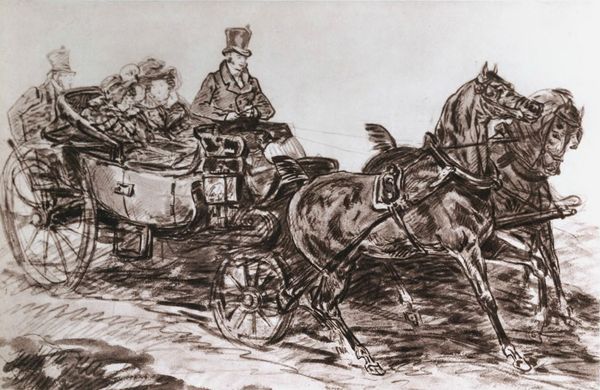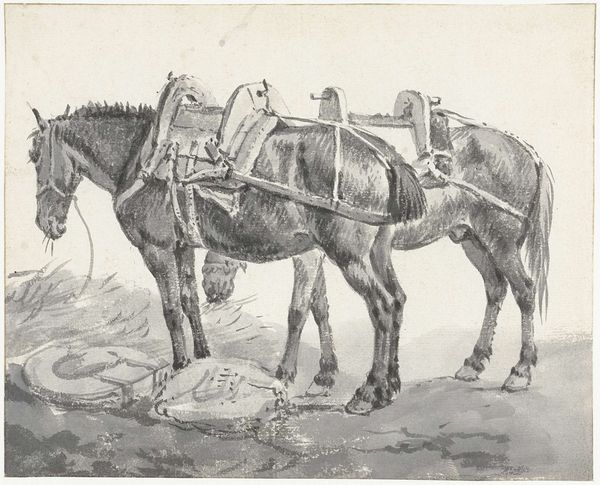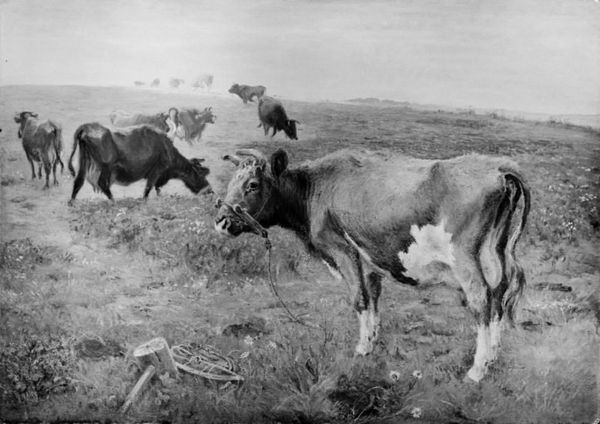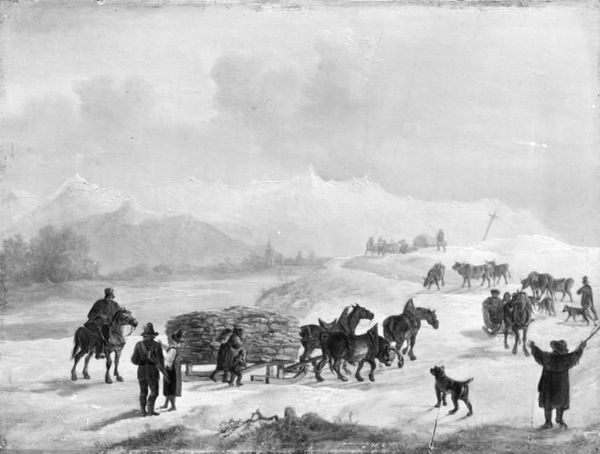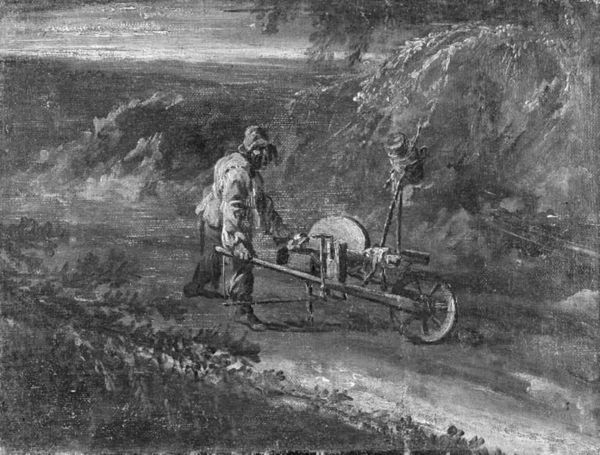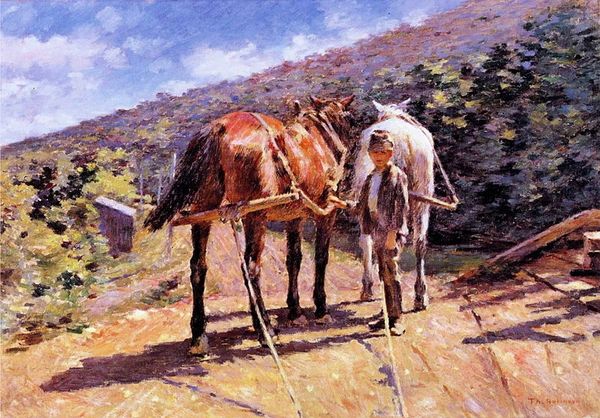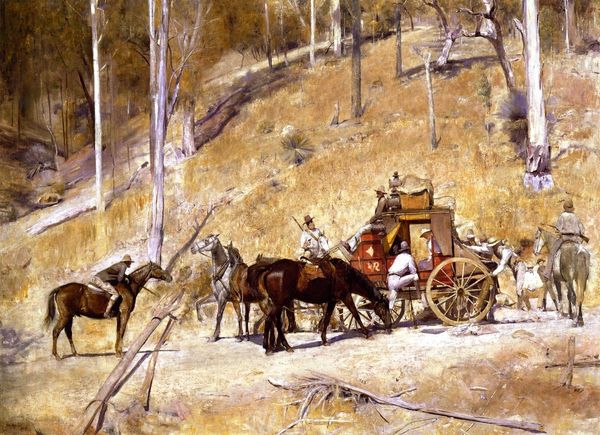
painting
#
painting
#
landscape
#
genre-painting
#
monochrome
#
monochrome
Dimensions: 63 cm (height) x 95 cm (width) (Netto)
Editor: Here we have "A Horse-Drawn Wagon in a Gravel Pit," painted in 1910 by M. Therkildsen. It’s currently housed at the SMK in Copenhagen. The monochrome palette gives it a solemn feel. What story do you think this landscape and its inhabitants are telling? Curator: I see a document of labor, presented without romanticism. Consider the date, 1910. Industrialization was reshaping societies, but in many rural areas, horse-drawn carts remained essential. The gravel pit itself speaks of infrastructure development, the raw materials fueling societal growth. Notice how the horses aren't idealized, but presented as working animals. Doesn’t the subdued palette underscore the utilitarian nature of the scene? Editor: That’s interesting, I hadn't thought about it that way. So, this isn't just a snapshot of rural life, but also a comment on the era’s socio-economic landscape? Curator: Precisely. The artist isn't offering a picturesque view of the countryside, but a glimpse into the engine of progress. Look at how the scene is devoid of grand narratives, devoid of idealizations. How do museums affect the way we look at artwork like this, do you think? Editor: I suppose a museum contextualizes and gives significance to a painting, maybe beyond what the artist intended originally. By choosing to preserve and exhibit this work, museums say something about the enduring relevance of portraying working life, even the unglamorous parts. Curator: Exactly! The museum elevates the everyday, inviting reflection on the relationship between labor, progress, and representation. It reveals politics of the imagery and its presentation through history and the present day. It definitely changes how it's perceived! Editor: This has given me a new perspective on what might have seemed, initially, like a very simple genre scene. Thank you for this nuanced view on labor, infrastructure and artistic perspective. Curator: My pleasure. Art invites us to continually reinterpret history and society.
Comments
No comments
Be the first to comment and join the conversation on the ultimate creative platform.
